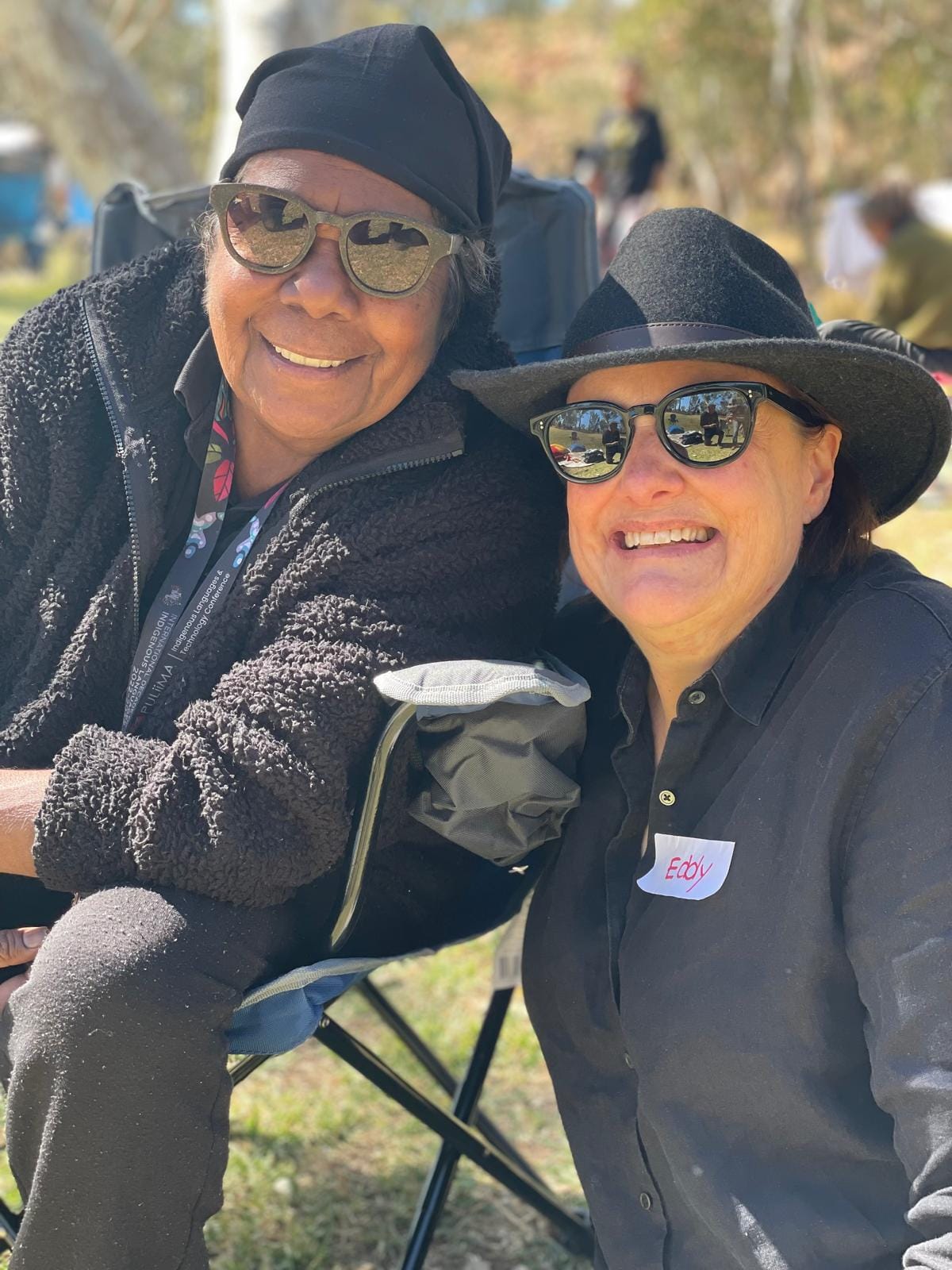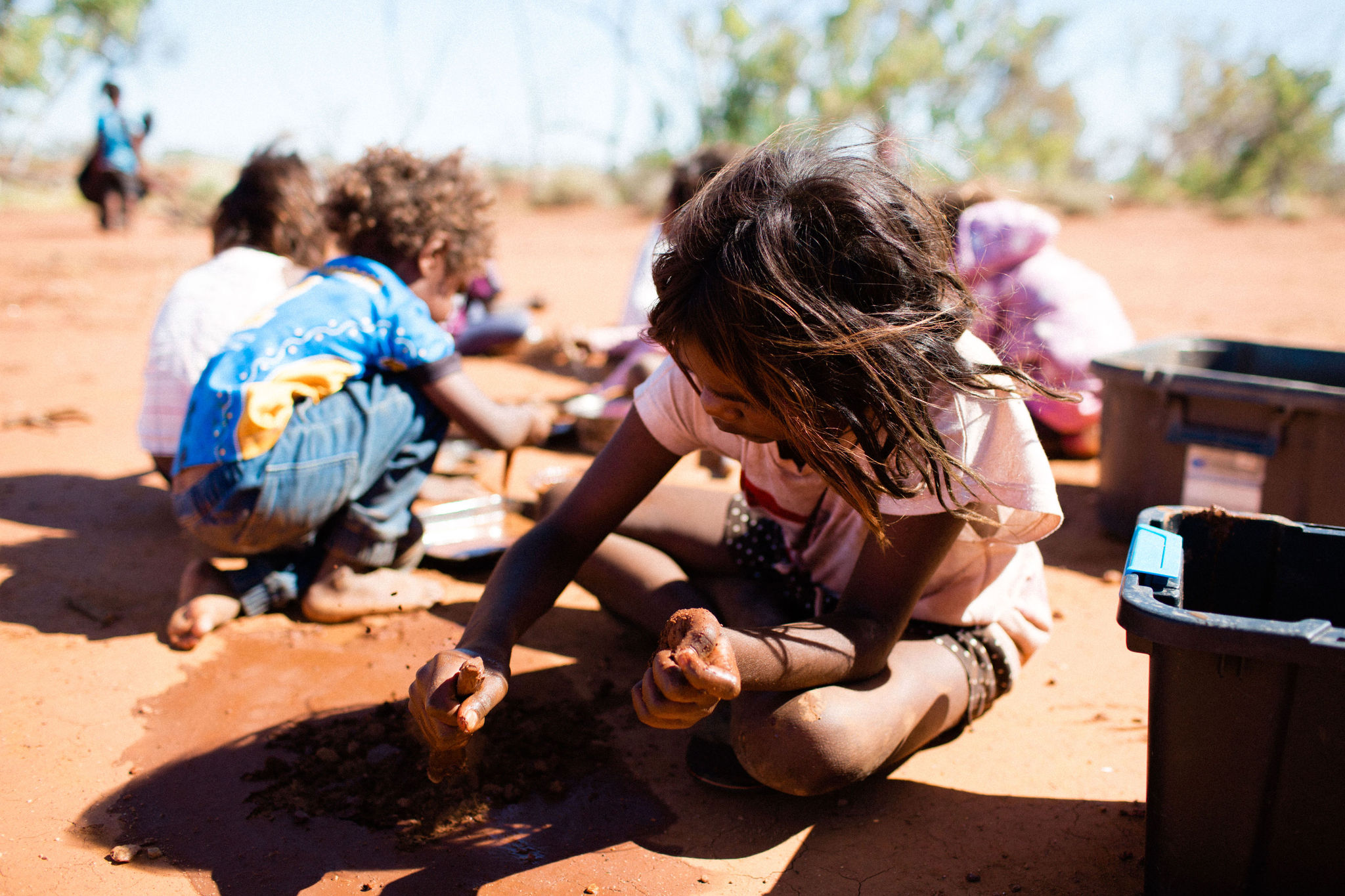What is Children’s Ground?
From little ones to Elders, Children’s Ground works with entire First Nations communities over a 25 year period to create real and lasting change; integrating key services across 5 areas of wellbeing: Learning, Health, Economic Development, Community Development and Creative & Cultural Development.
Designed with First Nations leaders, the evidence-based approach partners with whole communities to transform lives and ‘Close the Gap’ at a local level; an approach that can be utilised nationwide!
With the support of philanthropic and government funding, they have commenced implementing the 25 year strategy in a staged approach:
- Walk, Talk & Act Community engagement & planning (12-24 months)
- Access & Engagement Establishing the Children’s Ground Approach (1-3 years)
- Opportunity – A new norm emerging (4-10 years)
- Change & Consolidation (11-20 years)
- Sustainability (20-25 years & ongoing)
The significance of the Children’s Ground approach lies not just in what they do, but how they do it. The blue circles in the diagram below represent how they do it, this is what makes their work unique:
Why are we partnering?
In 2008, the Australian government made a formal commitment to address Indigenous disadvantage through the ‘Closing the Gap’ initiative. Despite years of effort, progress has been limited, with the latest annual report indicating that only five out of 17 targets are on track to be met. Alarmingly, four targets are worsening.
One of the critical challenges is the lack of sustainable, long-term funding avenues for First Nations initiatives that respond to their unique needs and priorities. According to Philanthropy Australia, a staggering 0.5% of philanthropic funding in Australia goes to First Nations communities.

In light of this, we are proud to partner with Children’s Ground, which is making a significant impact against Closing the Gap outcomes. In 2023 alone:
- 272 First Nations children engaged with cultural and Western early learning alongside their families, many of whom had never or rarely engaged before.
- Over 1350 children and their families participated in targeted and universal health promotion and support, with 91% of families reporting improvements in their children’s physical health since starting with Children’s Ground.
- More than 1120 children, young people, and families engaged in cultural knowledge programs, enhancing their confidence and sense of wellbeing.
More than 110 First Nations adults were employed by Children’s Ground, with one in three experiencing paid employment for the first time, and the majority having been unemployed prior to joining.
How can you help?
By partnering with Children’s Ground we get a glimpse of how we might close the gap at a local level; an approach that can be utilised nationwide. By committing to long-term, untied funding you empower First Nations communities to fulfil their strategies and meet their unique needs.
If you would prefer to support a specific Children’s Ground project, please consider:
1. Minmarama/Kulaluk Community Centre: – $550,000
This project aims to enhance community facilities by building a dedicated community centre at Minmarama, where existing programs cannot run effectively during the wet season. Future stages include constructing a toilet block and a camp kitchen to support various programs and events, facilitating greater engagement and service delivery.
2. Playground for Knuckeys Lagoon – $145,000
This initiative involves the installation of a new playground in Knuckey’s Lagoon, creating a safe and engaging space for children to play and develop. The playground will include a variety of equipment designed for different age groups, promoting physical activity and social interaction. It will be built with input from the community to ensure it meets local needs and preferences.
3. Mobile Laundry Service – $115,000
This pilot program aims to provide a mobile laundry service in collaboration with Orange Sky to improve health and wellbeing in communities. The service will include three washers and three dryers powered by solar energy, ensuring environmentally friendly operations. It will serve as a crucial resource for families in public housing and communities, providing a place for health promotion discussions and helping to address practical hygiene needs.
